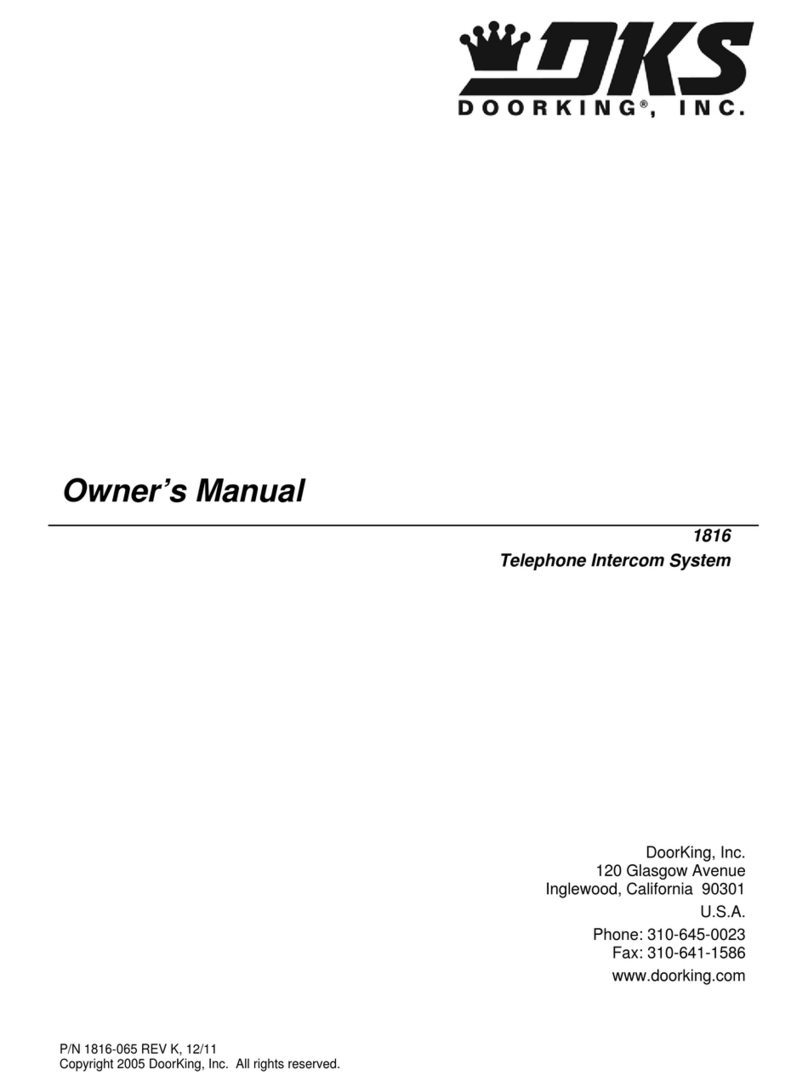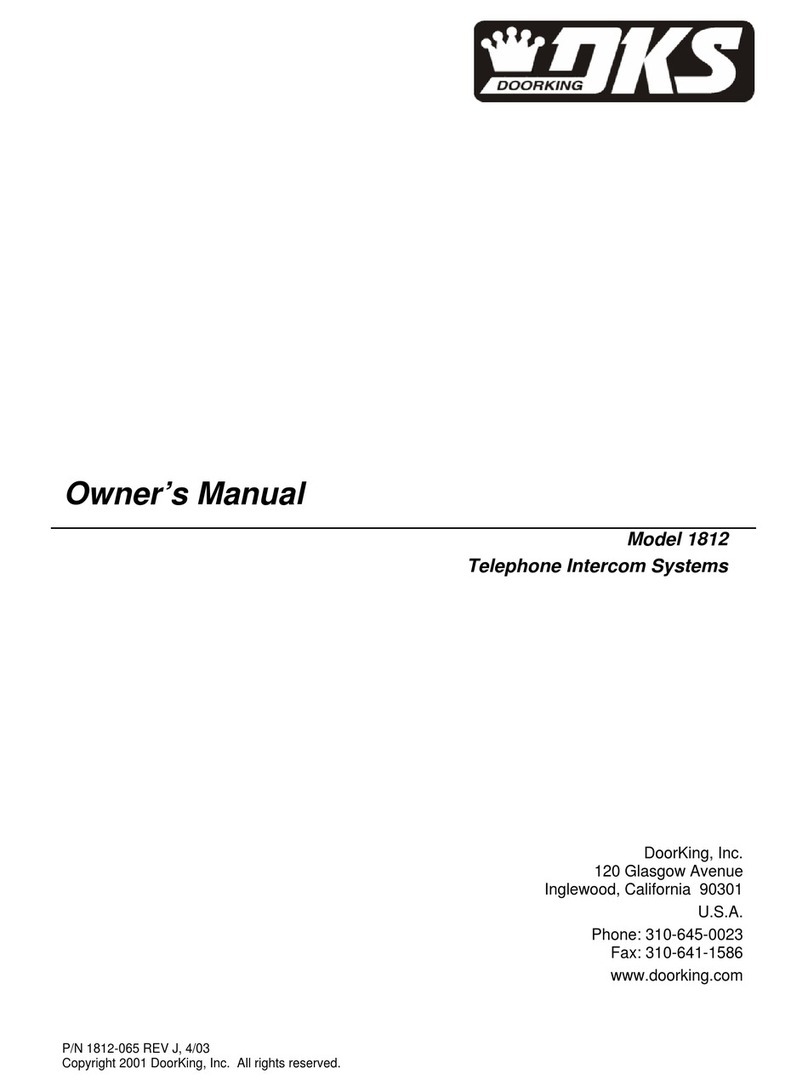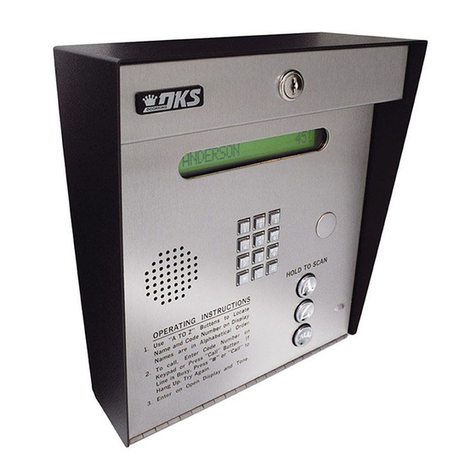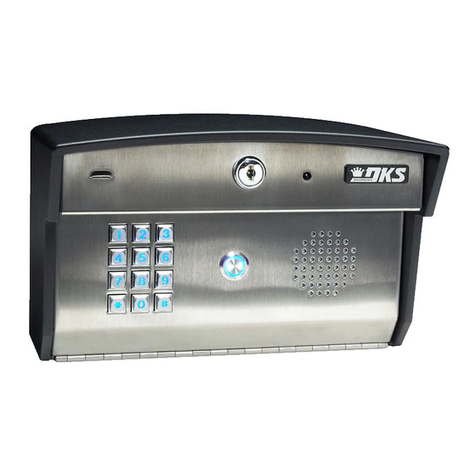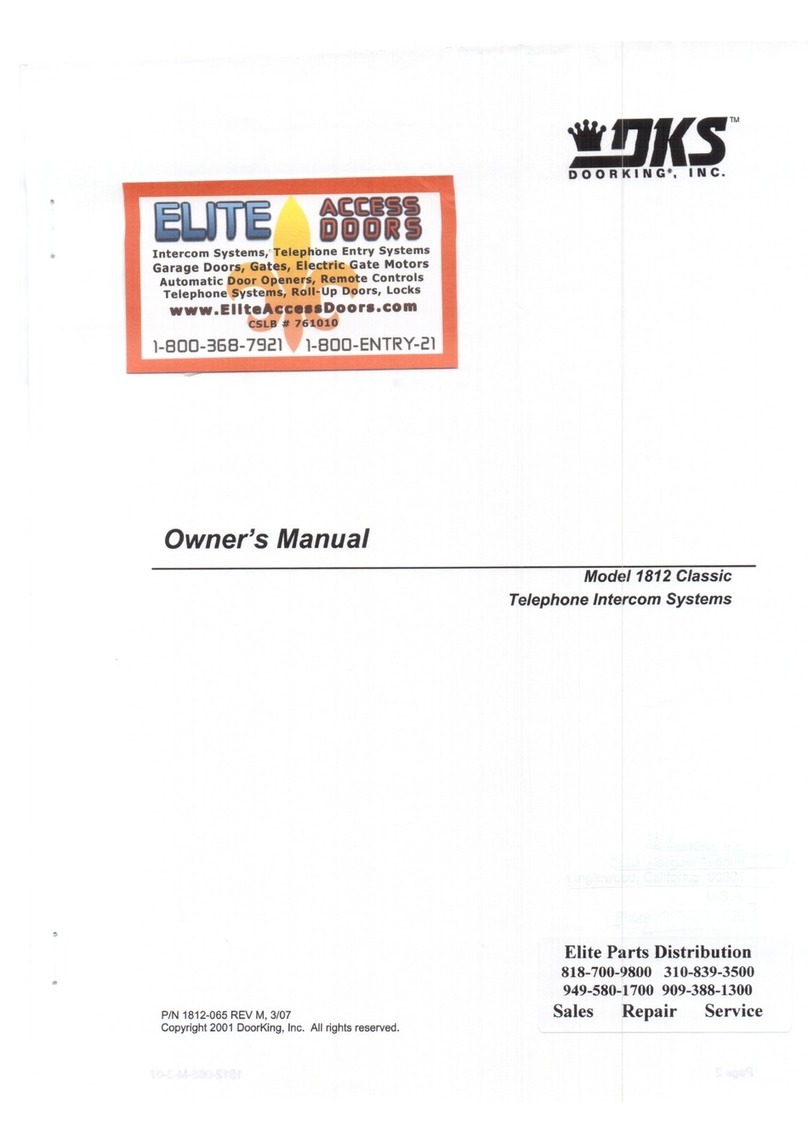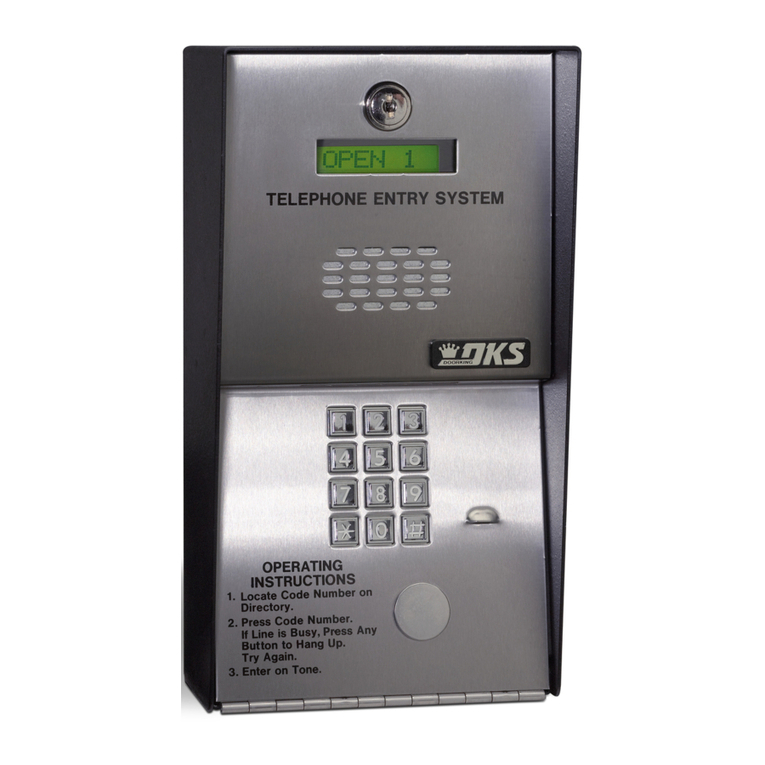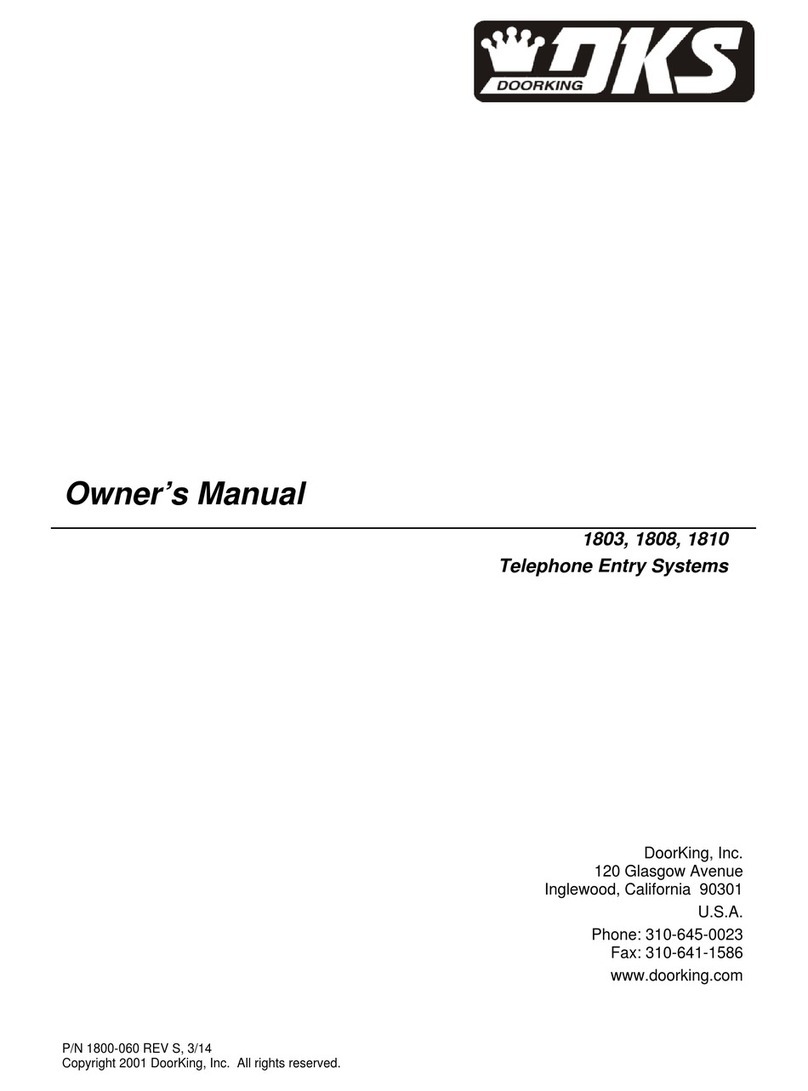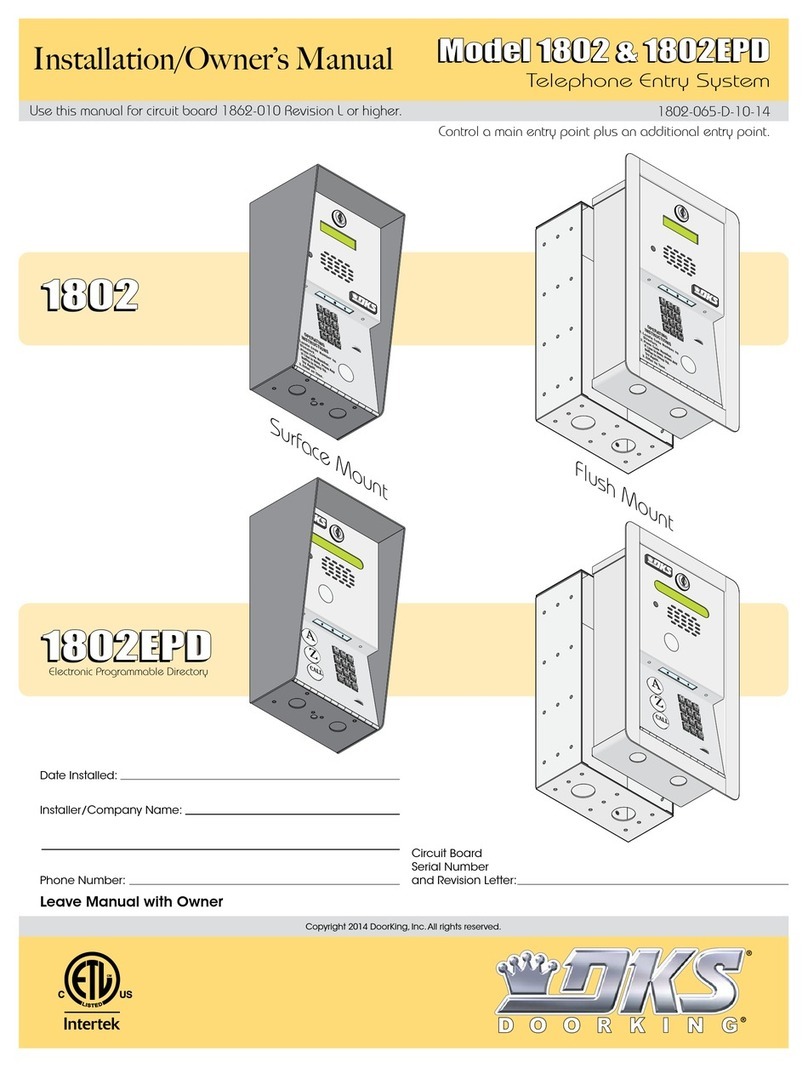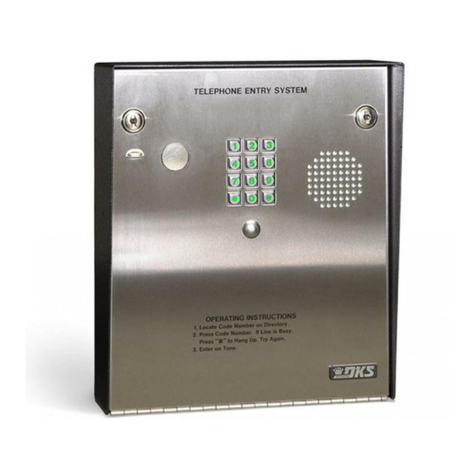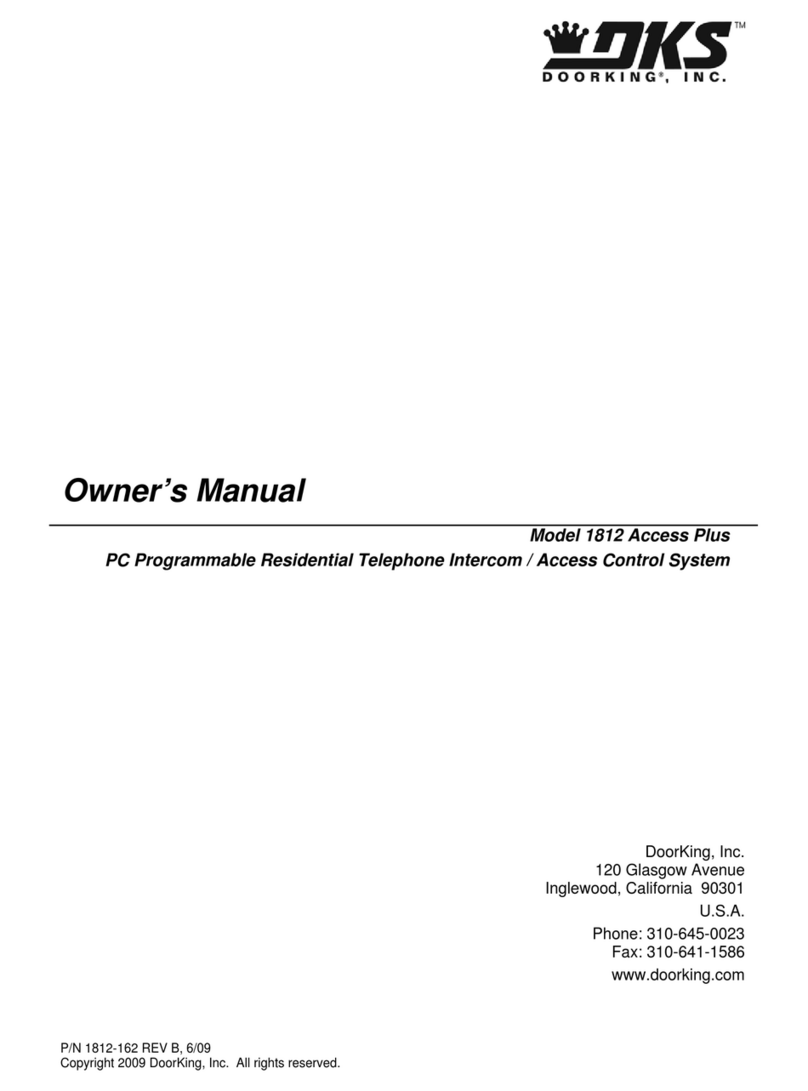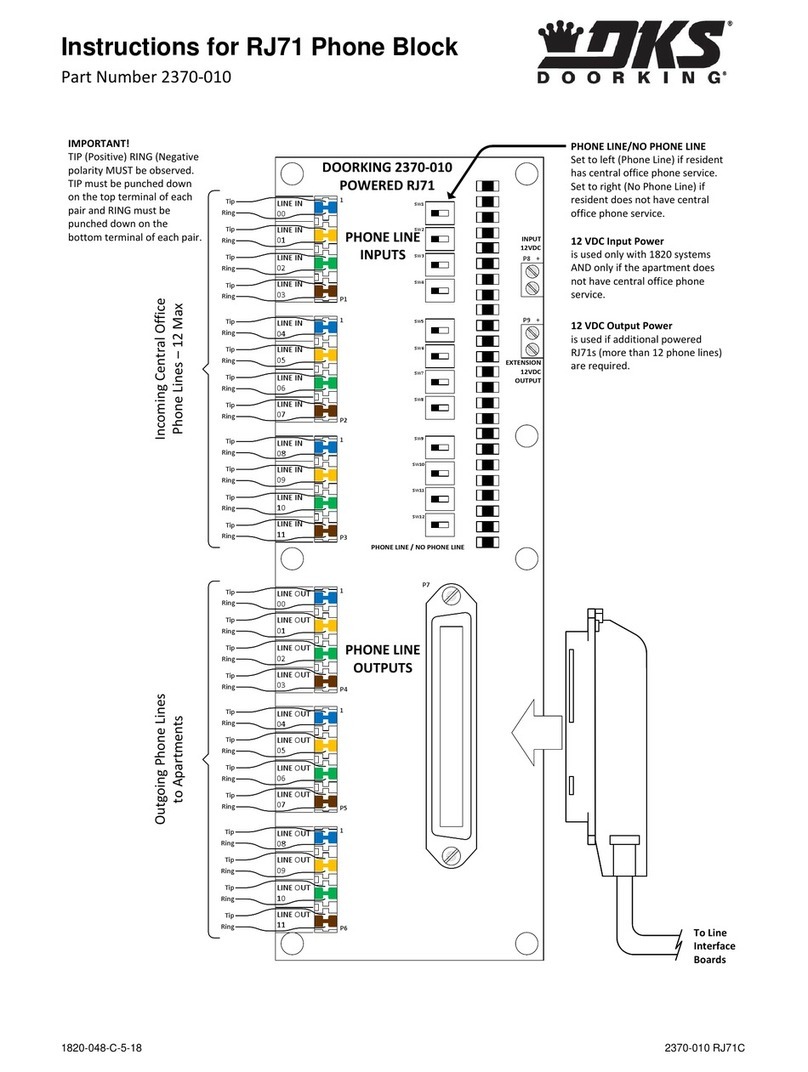
1802-065-A-8-06
Page 6
Preface
Important Notices......................................................................................................................................................8
Important Information................................................................................................................................................9
Features ..................................................................................................................................................................10
Section 1 – Installation
1.1 Installation Guidelines ..............................................................................................................................11
1.2 Surface Mount..........................................................................................................................................12
1.3 Flush Mount..............................................................................................................................................13
1.4 Flush Mount Rough-in Box.......................................................................................................................14
1.5 Memory Chip Installation..........................................................................................................................15
1.6 Postal Lock Installation.............................................................................................................................16
Section 2 – Wiring & Adjustments
General Information..................................................................................................................................................17
2.1 Circuit Board Adjustments........................................................................................................................18
2.2 Wiring Diagram.........................................................................................................................................19
2.3 Main Terminal Description........................................................................................................................20
2.4 Adjustments
2.4.1 Speaker Volume.......................................................................................................................21
2.4.2 Microphone Volume .................................................................................................................21
2.4.3 Feedback..................................................................................................................................21
2.4.4 Click Sensitivity ........................................................................................................................21
2.4.5 Display Contrast.......................................................................................................................21
2.4.6 Master Code Switch.................................................................................................................22
2.4.7 Ring Pin....................................................................................................................................22
2.4.8 Handset / Hands Free..............................................................................................................22
Section 3 – Programming
General Information..................................................................................................................................................23
3.1 General Programming
3.1.1 Master Code.............................................................................................................................24
3.1.2 Single or Multiple Systems.......................................................................................................24
3.1.3 Relay Strike Time.....................................................................................................................24
3.1.4 Talk Time..................................................................................................................................25
3.1.5 Tone Open Numbers................................................................................................................25
3.1.6 Postal Switch............................................................................................................................26
3.1.7 Touch-tone / Rotary-dial...........................................................................................................26
3.1.8 Number of Rings to Answer .....................................................................................................26
3.1.9 Keypad Function ......................................................................................................................26
3.1.10 Star (*) Key Function................................................................................................................27
3.1.11 System Stay On Line after Touch Tone...................................................................................27
3.1.12 Automatic Hang-up...................................................................................................................27
3.2 Phone Number Programming
3.2.1 Directory Code Length .............................................................................................................28
3.2.2 7-Digit Phone Numbers............................................................................................................28
3.2.3 Area Codes ..............................................................................................................................29
3.2.4 Phone Numbers with Area Code Reference............................................................................29
3.2.5 Deleting Individual Phone Numbers.........................................................................................29
3.2.6 Delete All Phone Numbers.......................................................................................................30
3.2.7 Display / Delete Phone Numbers.............................................................................................30
3.2.8 Display Phone Numbers with Known Directory Code..............................................................30
TABLE OF CONTENTS






